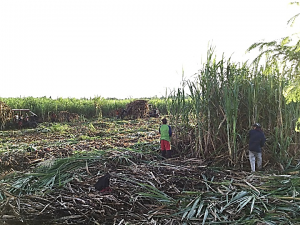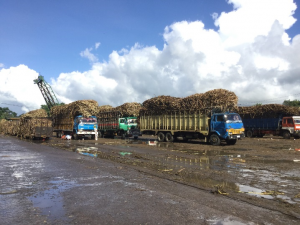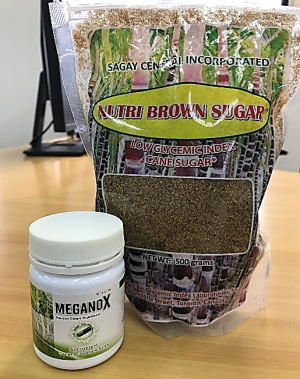June 18, 2018
Changes in the Sugarcane Industry in the Philippines
 Promar team recently visited the Philippines to conduct a research project on local sugarcane industry. Historically, the Philippines was famous for its production of sugar. During Spanish and American ruling era, the local sugarcane industry had boomed under large sugarcane plantations which assisted the country’s economic growth. Sugar was one of the important agricultural commodities and its largest importer was the United States. Sugar is still an important agricultural export product for the Philippines, however, the local sugarcane industry has shrunk down compared to its peak periods. The industry experienced ups and downs throughout past decades and it has been struggling to stabilize its sugar production to meet local and the US demand. Promar team set out to understand the current challenges faced by the Philippines sugarcane industry.
Promar team recently visited the Philippines to conduct a research project on local sugarcane industry. Historically, the Philippines was famous for its production of sugar. During Spanish and American ruling era, the local sugarcane industry had boomed under large sugarcane plantations which assisted the country’s economic growth. Sugar was one of the important agricultural commodities and its largest importer was the United States. Sugar is still an important agricultural export product for the Philippines, however, the local sugarcane industry has shrunk down compared to its peak periods. The industry experienced ups and downs throughout past decades and it has been struggling to stabilize its sugar production to meet local and the US demand. Promar team set out to understand the current challenges faced by the Philippines sugarcane industry.
For the Philippines, its priority is to satisfy local demand for sugar and to meet the import quota for the US market. Domestic supply and demand of sugar are estimated every year, and the government affiliated regulatory body, the Sugar Regulatory Administration (SRA), oversees and controls the overall supply of sugar. They control the supply under a unique system called “Quedan System”, which allocates what percentages of local production should be supplied to domestic market, to the U.S. market, as well as to the international market. The Quedan System is mainly set up to protect local sugarcane farmers and maintain a stable price through controlling the supply volume.
Through our field research in the Philippines, we identified that sugar production has been facing a number of challenges due to
- adverse climate change effects (El Niño, La Niña, and typhoons)
- fragmented sugarcane farmland under the agrarian reform
- labor shortage (especially during harvest season)
- lack of infrastructure
- delay in farm mechanization
- lack of financial assistance
 In addition, the Philippine Congress passed a new tax bill which included an excise tax on sweetened beverages. The new tax applies to certain drinks with added sugar such as soft drinks and energy drinks which contain caloric and/or non-caloric sweetener (mostly sugar and/or high fructose corn syrup as well as aspartame).
In addition, the Philippine Congress passed a new tax bill which included an excise tax on sweetened beverages. The new tax applies to certain drinks with added sugar such as soft drinks and energy drinks which contain caloric and/or non-caloric sweetener (mostly sugar and/or high fructose corn syrup as well as aspartame).
This bill was proposed due to a growing concern over adverse health effects resulting from a large consumption of sugar. Although the country has lower prevalence on major health issues such as diabetes and obesity compared to other ASEAN countries (e.g. Indonesia and Thailand), some experts estimate that over 7 million of Filipinos are obese and/or diabetic.
It is anticipated that increasing the price of sweetened beverages would drive consumers to make fewer purchases and reduce sugar intake accordingly. With the new bill came into effect in January 2018, beverages containing caloric and non-caloric sweeteners (e.g. sugar, aspartame, etc.) are now taxed at 6 pesos per liter and beverages containing high fructose corn syrup are taxed at 12 pesos per liter.
 While those challenges are not easy to overcome, we found that different efforts have been made by stakeholders of sugarcane industry. Some sugarcane millers are collaborating with local farmers by providing training courses to help farmers increase their yield. One of the mills we visited in Negros island has invested in new product development to expand its market and consumers. Another mill we interviewed has been discussing with local governments and farmers the possibilities of expanding sugarcane fields in newly identified farmland. In addition, there is a new law passed in 2015 to revive local sugarcane industry which provides government financial assistance to infrastructure, farm mechanization, etc.
While those challenges are not easy to overcome, we found that different efforts have been made by stakeholders of sugarcane industry. Some sugarcane millers are collaborating with local farmers by providing training courses to help farmers increase their yield. One of the mills we visited in Negros island has invested in new product development to expand its market and consumers. Another mill we interviewed has been discussing with local governments and farmers the possibilities of expanding sugarcane fields in newly identified farmland. In addition, there is a new law passed in 2015 to revive local sugarcane industry which provides government financial assistance to infrastructure, farm mechanization, etc.
Although it will take more time and require consistent efforts by the government and local industry players to stabilize the sugar production, we were able to see positive changes in the industry.
Photo 1: Farmers harvesting sugarcanes in Negros island
Photo 2: Trucks full of sugarcane waiting to deliver their harvest to a sugar mill
Photo 3: Low-GI sugar and antioxidant supplement derived from sugarcane extract developed by Sagay Central
